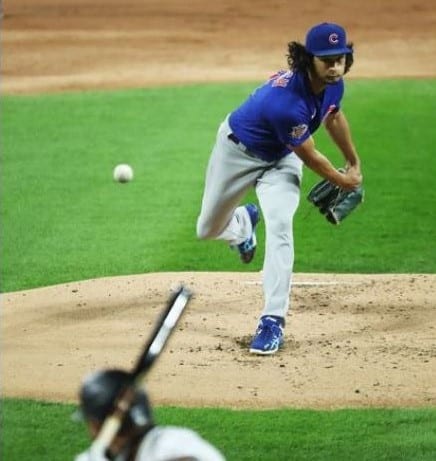
In 2017, Yu Darvish was one of the hottest commodities at the trade deadline. During the first half that year, he became an All-Star for the fourth time with a 3.49 ERA and 125 strikeouts over 118 innings. And with a three-season reputation of performing like a top-of-the-rotation arm, the Los Angeles Dodgers traded for the prominent pitcher in hopes he could help lead them to their first World Series title since 1988.
That dream, however, quickly crumbled.
After successful starts in the 2017 Division and League Championship rounds, Darvish was shelled over two starts against the Houston Astros during the World Series. But the blame can’t be placed only on the Astros sign-stealing scandal as the singular culprit. One of Darvish’s starts came in Los Angeles. There were also rumors that Darvish might have been tipping his pitches.
No matter the reason, his World Series performance left Darvish snake-bitten on the mound. The right-hander from Habikino, Japan, signed a six-year, $126 million with the Chicago Cubs after the 2017 season and struggled mightily in his first two years.
But during this strange, unorthodox 60-game season, Darvish has rekindled his career on the Northside of Chicago and is a top contender for the National League Cy Young—an award a Japanese born player has yet to win in either league.
Two discernable stats point towards Darvish’s return to stardom. The first is his walk percentage, which is down three percent from last year to 4.7, and rates near the top of the leaderboard for the league, according to Baseball Savant. The other is his home run per nine innings, a major problem for Darvish over the last couple of seasons. This year his home run rate is down to 0.7 per nine innings, or only five home runs allowed over 76 innings, good enough for a tie in second among N.L. starters.
So not only is Darvish throwing more strikes, but he is also missing barrels while doing it. One strong reason for this turnaround could be traced back to pitch usage.
Throughout his career, Darvish has relied heavily on his four-seam fastball, throwing it, according to Baseball Savant, an average of 34 percent of the time over the previous four seasons. This year, however, he has thrown it just 15.4 percent. Instead of leaning on his four-seamer, Darvish has relied more on his cutter, with usage jumping nearly eight percent to 44. Even though he has thrown it more often this year and has slightly inflated numbers, the pitch is still getting roughly the same positive results as it has in the past. His four-seamer results have also improved greatly—his whiff percentage on the four-seamer improving 12 percent to 41—with the pitch seeing a lower usage.
But sometimes the picture can be changed in more than just analytical ways. As Sahadev Sharma, the Cubs’ beat writer for The Athletic, pointed out in a recent article, Darvish has slowed down his pace, similar to what it was when he pitched in Japan, and adopted a “next pitch” mentality.
That kind of mentality, along with other changes, is necessary to be in the class of elite Cy Young candidates like Trevor Bauer of the Cincinnati Reds and Jacob deGrom of the New York Mets. As a result, Darvish has firmly entrenched himself in the Cy Young conversation.
Among National League pitchers who qualify, Darvish ranks first in fWAR (3.0), first in FIP (2.23), second in ERA (2.01), third in strikeouts (93), and fourth in WHIP (0.96).
Darvish’s return to All-Star form has been one of the most surprising and dominating performances of this truncated season.
But even if he doesn’t win the Cy Young and Japan has to wait a little longer for its first Cy Young winner, Darvish has done exactly what the Cubs thought he would do when they signed him three years ago: be the bonafide ace of the staff.
For more Japanese baseball news, check out JapanBall’s Articles and Features section!